On The Unhealthy Homosexual Lifestyle
On The Unhealthy Homosexual Lifestyle
NOTE: this article discusses some pretty nasty health problems that predominantly affect homosexuals and lesbians. It is not recommended reading for everyone but it does point out the truth about this disgusting and deadly lifestyle.
Medical researchers have known for many years that the “homosexual lifestyle” is a very disease-ridden lifestyle. (The fact that the dominant liberal media are downplaying and/or ignoring and/or censoring the following crucial information should give you a clue as to just how biased, untrustworthy, corrupt, and potentially detrimental they can be.)
For example, one 1982 study mentioned in the Journal of the American Medical Association found that the anal cancer rate for homosexuals is way above normal, maybe as high as 50 times normal.1 And a 1997 New England Journal of Medicine study again drew attention to the “strong association between anal cancer and male homosexual contact.”2 (The reason for the connection is that the lining of the anus, as opposed to the much thicker lining of the vagina, is only a single cell in thickness, tears easily, and thus is an easy point of entry for viruses and bacteria. Just as repeatedly assaulting lung tissue with cigarette smoke increases one’s lung cancer risk, repeatedly damaging the anus and rectum increases one’s anal cancer risk. Anal sex frequently results in damage to the anus and rectum. Too, this helps explain why AIDS is spread so easily in the homosexual community. However, even when there are not any tears in the anal lining, there is still a high risk for HIV infection because certain cells in its mucous lining [M-cells and Langerhans cells] can be infected and will then carry HIV deeper into one’s body.)
Another study found that: 1) 80% of syphilitic patients are homosexual; 2) about one-third of homosexuals are infected with active anorectal herpes simplex viruses; 3) chlamydia infects 15% of homosexuals; and 4) “a host of parasites, bacterial, viral, and protozoan are all rampant in the homosexual population.”3
Another study found that: 1) amoebiasis, a parasitic disease, afflicts around 32% of homosexuals; 2) giardiasis, also a parasitic disease, afflicts 14% of homosexuals (no heterosexuals in the study were found to have either amoebiasis or giardiasis); 3) gonorrhea afflicts 14% of homosexuals; and 4) 11% of homosexuals had anal warts.4
Another study found that anorectal sepsis, a potentially toxic bacterial infection, is 4 times more common in homosexual than heterosexual men.5
According to another study, the “prevalence of EBV type 2 [the Epstein-Barr type 2 virus] among homosexual men was significantly higher than it was among heterosexual men (39% vs. 6%).”6 (That virus causes infectious mononucleosis and is associated with two types of cancer: Burkitt’s lymphoma and nasopharyngeal carcinoma.)
And other studies have found abnormally high rates of hepatitis B infection,7 hepatitis A infection,8 prostate cancer,9 colitis, enteritis, proctitis, and proctocolitis10 in homosexual men.
In 1997 a writer for the pro-homosexual New York Times noted that a young male homosexual in America has about a 50% chance of getting H.I.V. by middle age, that many homosexuals have abandoned “safe sex” in favor of unprotected anal sex, and that the incidence of gonorrhea rose 74% among homosexuals between 1993 and 1996.11
According to a study by the CDC, in 2002, 88% of San Francisco syphilis cases were found among homo/bisexual men.12
The Chicago Department of Public Health reported that the percentage of Chicago AIDS diagnoses connected to homo/bisexual men increased from 37% in year 2000 to 44% in 2003; and in mid-2006 it also reported that homo/bisexual men accounted for approximately 73% of Chicago syphilis cases for the year 2005. And a September 2010 report from the Centers for Disease Control titled “HIV among Gay, Bisexual and Other Men Who Have Sex with Men (MSM)” noted: “Gay, bisexual, and other men who have sex with men (MSM) represent approximately 2% of the US population, yet are the population most severely affected by HIV and are the only risk group in which new HIV infections have been increasing steadily since the early 1990s….At the end of 2006, more than half (53%) of all people living with HIV in the United States were MSM or MSM-IDU [injection drug user].”
And according to a CDC report released in November 2009, 63% of syphilis cases in this country were found in homo/bisexuals in 2008.
We’ll conclude this section on male homo/bisexual STDs with three short refreshingly honest quotes from the Gay and Lesbian Medical Association. These were found on its website, http://www.glma.org, on Nov. 4, 2009, in a document titled “Top 10 Things Gay Men Should Discuss with their Healthcare Provider.” (It may still be on its website.)
The quotes: 1) “[M]en who have sex with men are at an increased risk of HIV infection….[T]he last few years have seen the return of many unsafe sex practices.”
2) “Sexually transmitted diseases (STDs) occur in sexually active gay men at a high rate. This includes…syphilis, gonorrhea, chlamydia, pubic lice,…Hepatitis A, B, or C virus, Human Papilloma Virus, etc.”
3) “Gay men may be at risk for death by prostate, testicular, or colon cancer….[And there are] increased rates of anal cancers in gay men.”
Regarding lesbians, they face a higher breast cancer risk. One study of lesbians found that: “Sixty-three percent of the lesbians had never been pregnant….[And] Not having children increases a woman’s breast cancer risk by between two to six times.”13 Not having children also “may be a risk factor for ovarian cancer and may be implicated in endometrial cancer as well.”14
Another study found bacterial vaginosis occuring in 33% of the lesbians but only in 13% of heterosexual women, and found that: “Cervical cytology abnormalities were uncommon but only found in the lesbians.”15 (Those abnormalities may be precursors to cervical cancers.)
Another study of lesbians found a “relatively high prevalence of the viral STDs, herpes simplex and human papillomavirus [HPV].”16 And according to another: “Genital HPV infection and squamous intraepithelial lesions are common among women who are sexually active with women.”17 HPV has been connected to cervical cancer. “DNA analysis has revealed that about 15 types of the virus account for more than 99 percent of all cervical cancer cases.”18
(One reason lesbians have a relatively high incidence of STDs is that, as some studies have documented, lesbians have more sexual partners than heterosexual women. For example, a large University of Chicago study concluded that lesbians have four times as many sexual partners as straight women.19)
We’ll conclude this section on lesbian STDs with two short quotes from the Gay and Lesbian Medical Association. These were found on its website in a document titled “Top 10 Things Lesbians Should Discuss with their Healthcare Provider.”
1) “Lesbians have the richest concentration of risk factors for breast cancer than any subset of women in the world.”
2) “Lesbians have higher risks for many of the gynecologic cancers.”
It should be noted that lesbian sexual diseases have not been researched nearly as much as male homosexual sexual diseases. This is because lesbian sex was presumed to be relatively safe. Some doctors are fairly calling for more research into the health of lesbians. With more study, we may find the “lesbian lifestyle” is not so safe after all.
Another relatively unknown fact: the blood of male homosexuals tends to be so contaminated with various viruses and bacteria that all male homosexuals who have been sexually active since 1977 are barred from donating blood.
A contributing factor to all the diseases found in homosexuals is habitual promiscuity; and a contributing factor to their promiscuity is the popularity of drug use among them. As a homosexual columnist for the Windy City Times, Jose Zuniga, has reported, there is “out-of-control drug use undermining our [homosexual] community’s health and well-being, and contributing to the transmission of sexually transmitted diseases.”20
Homosexual author Dennis Altman, in one of his books, likewise noted the popularity of drugs among homosexuals: “What is disturbing is the degree to which much of the gay world rests on a sea of alcohol and drugs.”21
Liberals and their media love to restrict the rights of consenting adults who smoke (because smoking can be harmful), who drink alcohol (for obvious reasons), who own guns (because accidents and murders happen), who believe homosexual activity is immoral and penalizeable (because liberals mistakenly think that there is a right to aberrations like homosexual behavior and also think that any “speech” that reflects negatively on homosexuals—like the information you are reading on this website—should be considered “hate speech”), etc., etc. Liberals love to patronizingly restrict our freedoms (“for our own good”).
However, liberals apparently believe it’s perfectly okay for people to spread sexual diseases all over this country. Why, we can’t restrict the rights of people who spread STDs! That’s oppression and fascism! Liberals are such hypocrites.
Incidentally, spending on AIDS research is excessive, totally out-of-whack, unconscionably unfair—and homosexuals are so selfish they don’t care. In the year 2000 we spent around $180 million on prostate cancer research versus around $7 billion on AIDS research, but the number of men who are stricken with prostate cancer each year in the U.S.A. is several times the number of people annually stricken with AIDS!! And in the year 2000 we spent only around $425 million on breast cancer research versus the $7 billion on AIDS research, even though the number of women who are stricken with breast cancer each year is again several times the number of people annually stricken with AIDS in this country!! It’s pretty clear that homosexuals care little about those who die of prostate and breast cancers and other diseases that are relatively underfunded compared to AIDS. Where is their humanity and sense of fairness?
Another point that needs making: homosexuals have done much damage to this country. For example, thousands of innocent hemophiliacs died of AIDS in years past because HIV-positive homosexuals infected the blood supply. (In 1984 “the Centers for Disease Control found 74 percent of hemophiliacs who received blood factors made from the plasma of U.S. donors were HIV positive.”22) And for another example, we are spending millions and millions of taxpayer dollars on anti-AIDS drugs for homosexuals who voluntarily engaged in unsafe sex. Because of these outrages homosexuals collectively owe America an apology and reparations for the damages.
To sum up, for various reasons (homosexual acts are physiologically unnatural, homosexuals are inclined to be notably promiscuous), the “homosexual lifestyle” tends to be a very unhealthy one—unhealthy both to individuals and to the society that indirectly pays for or suffers the consequences. To encourage anyone to engage in homosexual activity is clearly irresponsible and depraved.
(Since anal sex was discussed above, this section of our website is as good a place as any to note the following: One homosexual was honest enough to admit that the feeling of being “fisted,” i.e., having a fist moving back and forth in one’s rectum, is “like the feeling your funny bone gets when it’s hit, only it travels all over your body.”23 Being fisted is clearly not a truly pleasurable experience. Now, since an erect phallus moving back and forth in a rectum is somewhat analogous to being “fisted,” it seems reasonable to conclude that being the recipient of “anal sex” is not a truly pleasurable experience—indeed, it may be just the opposite. And if having matter—like a phallus—moving in a rectum was truly pleasurable, then defecating would also be pleasurable since when we defecate we have matter moving through our anal tissues. But only people with a psychological problem find the act of defecating pleasurable. To psychologically healthy people, defecating is no more pleasurable than drinking water, though it can be painful if one is constipated. We apologize for the graphic nature of this paragraph, but its content is relevant.)
FOOTNOTES
1. Council on Scientific Affairs, “Health care needs of gay men and lesbians in the United States,” JAMA, May 1, 1996, p. 1355. Because the homosexual anal cancer rate is so much higher than the heterosexual anal cancer rate, and because the difference is associated with the frequency of anal sex, we find many homosexuals and their supporters try to flat-out deny the inconvenient truth. Since this is a significant fact which reflects negatively on the physiologically unnatural homosexual lifestyle, we are going to provide ample documentation to prove our point. The following medical journal articles, in no particular order, also refer to the abnormally high homosexual anal cancer rate (we don’t mean to imply these are the only ones that do—we’re sure there are other such articles since that rate is very well-documented): M. Frisch, “On the etiology of anal squamous carcinoma,” Dan Med Bull, Aug. 2002, 49(3), pp. 194-209; M. Frisch and others, “Cancer in a population-based cohort of men and women in registered homosexual partnerships,” Am J Epidemiol, June 1, 2003, 157(11), pp. 966-72; D. Knight, “Health care screening for men who have sex with men,” Am Fam Physician, May 1, 2004, 69(9), pp. 2149-56; S. Goldstone, “Anal dysplasia in men who have sex with men,” AIDS Read, May-June 1999, 9(3), pp. 204-8 and 220; Reinhard Hopfl and others, “High prevalence of high risk human papillomavirus-capsid antibodies in human immunodeficiency virus-seropositive men: a serological study,” BMC Infect Dis, April 30, 2003, 3(1), p. 6; R.J. Biggar and M. Melbye, “Marital status in relation to Kaposi’s sarcoma, non-Hodgkins lymphoma, and anal cancer in the pre-AIDS era,” J Acquir Immune Defic Syndr Hum Retrovirol, Feb. 1, 1996, 11(2), pp. 178-82; P.V. Chin-Hong and others, “Age-related prevalence of anal cancer precursors in homosexual men: the EXPLORE study,” J Natl Cancer Inst, June 15, 2005, 97(12), pp. 896-905; R. Dunleavey, “The role of viruses and sexual transmission in anal cancer,” Nurs Times, March 1-7, 2005, 101(9), pp. 38-41; P.V. Chin-Hong and others, “Age-Specific prevalence of anal human papillomavirus infection in HIV-negative sexually active men who have sex with men: the EXPLORE study,” J Infect Dis, Dec. 15, 2004, 190(12), pp. 2070-6; J.R. Daling and others, “Human papillomavirus, smoking, and sexual practices in the etiology of anal cancer,” Cancer, July 15, 2004, 101(2), pp. 270-80; and A. Kreuter and others, “Screening and therapy of anal intraepithelial neoplasia (AIN) and anal carcinoma in patients with HIV-infection,” Dtsch Med Wochenschr, Sept. 19, 2003, 128(38), pp. 1957-62.
2. M. Frisch and others, “Sexually transmitted infection as a cause of anal cancer,” N Engl J Med, Nov. 6, 1997, p. 1350.
3. S.D. Wexner, “Sexually transmitted diseases of the colon, rectum, and anus. The challenge of the nineties,” Dis Colon Rectum (EAB), Dec. 1990, from the abstract, p. 1048. For further reading: J.F. Beltrami and others, “Trends in infectious diseases and the male to female ratio: possible clues to changes in behavior among men who have sex with men,” AIDS Educ Prev, Dec. 2005, 17(6 Suppl. B), pp. 49-56; (No authors listed) “Latest STD data in United States continues to portend problems with prevention, HIV. Other research notes high STDs among HIV-infected women,” AIDS Alert, Dec. 2005, 20(12), pp. 133-6; H.M. Truong and others, “Increases in sexually transmitted infections and sexual risk behaviors without a concurrent increase in HIV incidence among men who have sex with men in San Francisco: a suggestion of HIV serosorting,” Sex Transm Infect, Dec. 2006, 82(6), pp. 461-6; R.E. Baughn and D.M. Musher, “Secondary syphilitic lesions,” Clin Microbiol Rev, Jan. 2005, 18(1), pp. 205-16.
4. J. Christopherson and others, “Sexually transmitted diseases in hetero-, homo-and bisexual males in Copenhagen,” Dan Med Bull (DYN), June 1988, from the abstract, p. 285.
5. N.D. Carr and others, “Noncondylomatous, perianal disease in homosexual men,” Br J Surg (B34), Oct. 1989, from the abstract, p. 1064.
6. D. van Baarle and others, “High prevalence of Epstein-Barr virus type 2 among homosexual men is caused by sexual transmission,” J Infect Dis, June 2000, from the abstract, p. 2045.
7. K.S. Lim and others, “Role of sexual and non-sexual practices in the transmission of hepatitis B,” Br J Vener Dis (B40), June 1977, from the abstract, p. 190; R.S. Remis and others, “Association of hepatitis B virus infection with other sexually transmitted infections in homosexual men,” Am J Public Health, Oct. 2000, 90(10), pp. 1570-4; P.J. Saxton, “Sexually transmitted diseases and hepatitis in a national sample of men who have sex with men in New Zealand,” N Z Med J, July 26, 2002, 115(1158), p. U106.
8. J.J. Ochnio and others, “Past infection with hepatitis A virus among Vancouver street youth, injection drug users and men who have sex with men: implications for vaccination programs,” CMAJ, Aug. 7, 2001, 165(3), pp. 293-7.
9. J.S. Mandel and L.M. Schumann, “Sexual factors and prostate cancer: results from a case-control study,” J Gerontol, May 1987, from the abstract, p. 259.
10. Council on Scientific Affairs, op cit, p. 1356.
11. Sheryl Gay Stolberg, “Gay Culture Weighs Sense and Sexuality,” New York Times (late edition, east coast), Nov. 23, 1997, section 4, p. 1.
12. CDC, “Internet use and early syphilis infection among men who have sex with men—San Francisco, California, 1999-2003,” MMWR Morb Mortal Wkly Rep, Dec. 19, 2003, 52(50), pp. 1229-32.
13. Jim Ritter, “Breast cancer risk higher in lesbians,” Chicago Sun-Times, Oct. 16, 1998, p. 50. Another reference for further reading: S.L. Dibble and others, “Comparing breast cancer risk between lesbians and their heterosexual sisters,” Women’s Health Issues, March-April 2004, 14(2), pp. 60-8.
14. Council on Scientific Affairs, op cit, p. 1355.
15. C.J. Skinner and others, “A case-controlled study of the sexual health needs of lesbians,” Genitourin Med, Aug. 1996, from the abstract, p. 227.
16. A. Edwards and R.N. Thin, “Sexually transmitted diseases in lesbians,” Int J STD AIDS, May 1990, from the abstract, p. 178.
17. J.M. Marrazzo and others, “Genital human papillomavirus infection in women who have sex with women,” J Infect Dis, Dec. 1998, from the abstract, p. 1604.
18. Josh Fischman, “Sticking It To Cancer,” U.S. News & World Report, Apr. 3, 2006, p. 58.
19. E.O. Laurnarm and others, The social organization of sexuality: sexual practices in the United States, U. of Chicago Press, 1994.
20. Jose Zuniga, “Viagra Vexation,” Windy City Times, May 28, 1998, p. 14.
21. Dennis Altman, The Homosexualization of America, the Americanization of the Homosexual (NY: St. Martin’s Press, 1982), p. 222.
22. Monifa Thomas, “Baxter, other drug firms hit with AIDS-related lawsuit,” Chicago Sun-Times, April 25, 2005, p. 65.
23. Seymour Kleinberg, Alienated Affections (NY: St. Martin’s Press, 1980), p. 178.
SOURCE: http://home60515.com/4.html
RELATED ARTICLE: The Truth About Homosexuality




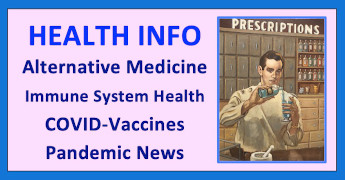
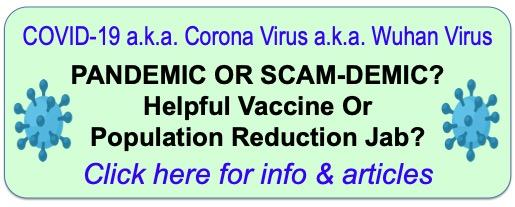








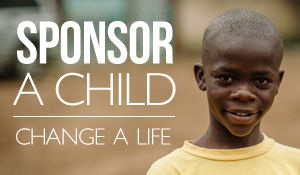

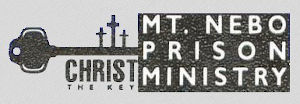

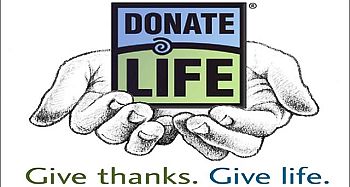

Leave a Reply
You must be logged in to post a comment.